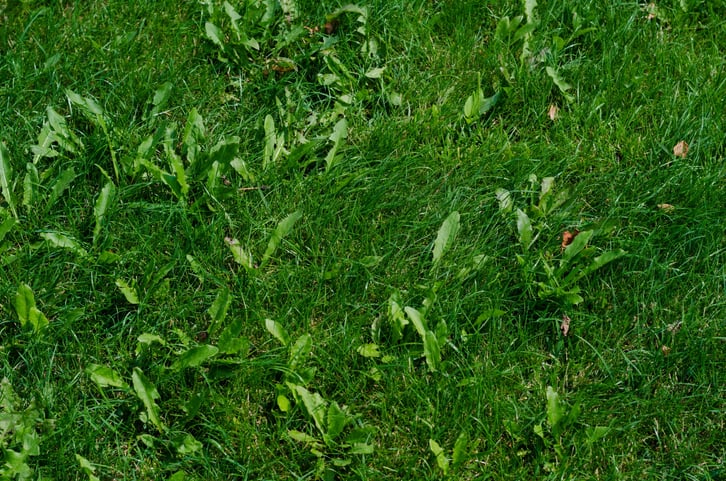The dawn of a new growing season is upon us. That means all of the beautiful flowers, the trees, your lawn, and yes...weeds, will be popping soon. So putting together a spring weed control plan is vital to maintaining the look you want from your lawn. Here’s why.
When weeds are actively growing, they produce thousands of weed seeds per plant. They also disperse those seeds throughout the season. Some weeds, like dandelions, will use the wind to help spread. Others will also be found in low-quality grass seed.
So, let’s take a look at the grassy weeds that can invade your yard and how a good spring weed control plan can keep them from ruining your lawn this summer.
Types Of Weeds To Look For
There are essentially three types of weeds you need to be on the lookout for each spring. They are Annual Weeds, Biennial Weeds, and Perennial Weeds.
- Annual Weeds. These weeds spread seeds that germinate and grow for a single season. They’ll die off on their own, at the end of their life cycle. Annual weeds include the following:
- Chickweed
- Groundsel
- Oxalis
- Hairy Bittercress
- Biennial Weeds. Biennial weeds have a lifespan of two years. The plant produces leaves and stores food in the first year, then fruits and seeds in the second year. Biennial weeds are most common in no-till fields, pastures, and unmowed fence rows. Common Biennial weeds include:
- Prickly Lettuce (Broadleaf Weed)
- Clover
- Wild Carrot
- Perennial Weeds. Perennials grow for a number of seasons (two or more). They spread by setting seeds and/or developing a root system. These include:
- Thistle
- Ground Ivy
- Dandelion
But implementing some preventative weed measures can eliminate them before they show up.
What You Can Do To Control Lawn Weeds
To eliminate weeds, sometimes it goes beyond just buying a garden variety weed and feed type product at the store. A good lawn care regimen will devote the proper time and technique in the early spring that kills weeds forever.
Spring Weed Control Tips
- Keep your soil shaded.
- Proper watering is essential.
- Aerate your soil regularly.
- Reseed thin areas and overseed.
Let’s explain these tips a little more.
Keep Your Soil Shaded
Keeping your soil shaded will reduce weed germination. You can do this by mowing the lawn 3 inches or higher.
Proper Watering
During dry times, watering enough to keep the turf healthy and growing is critical. Your lawn will need roughly 1 to 1.5 inches of water per week.
Aerate Your Soil
Aerating your soil regularly encourages healthy roots and a thick lawn. It also alleviates soil compaction.
Reseed and Overseed
Reseed any thin or bare areas and overseed your lawn. This will help to create a thick healthy lawn, which is best for weed prevention.
Lush Lawn Can Help
Different types of weeds germinate and show up in your lawn at different times throughout the growing season. Many weeds require different strategies. Some will die by applying a pre-emergent, but for others, it may take a post-emergent.
At Lush Lawn, our trained experts know exactly what type of treatment you need and when you need it. We understand that every lawn is unique — from different grass types to soil conditions. So, we pair our standard lawn care packages with a comprehensive list of specialized local lawn care services to cater to every need.
Our 7-step lawn care program is designed to handle every one of Michigan’s seasons. If you’d like to learn more about it, please contact us today.
